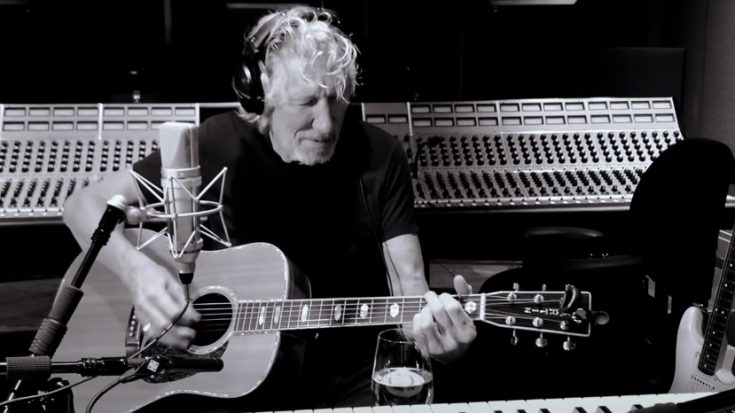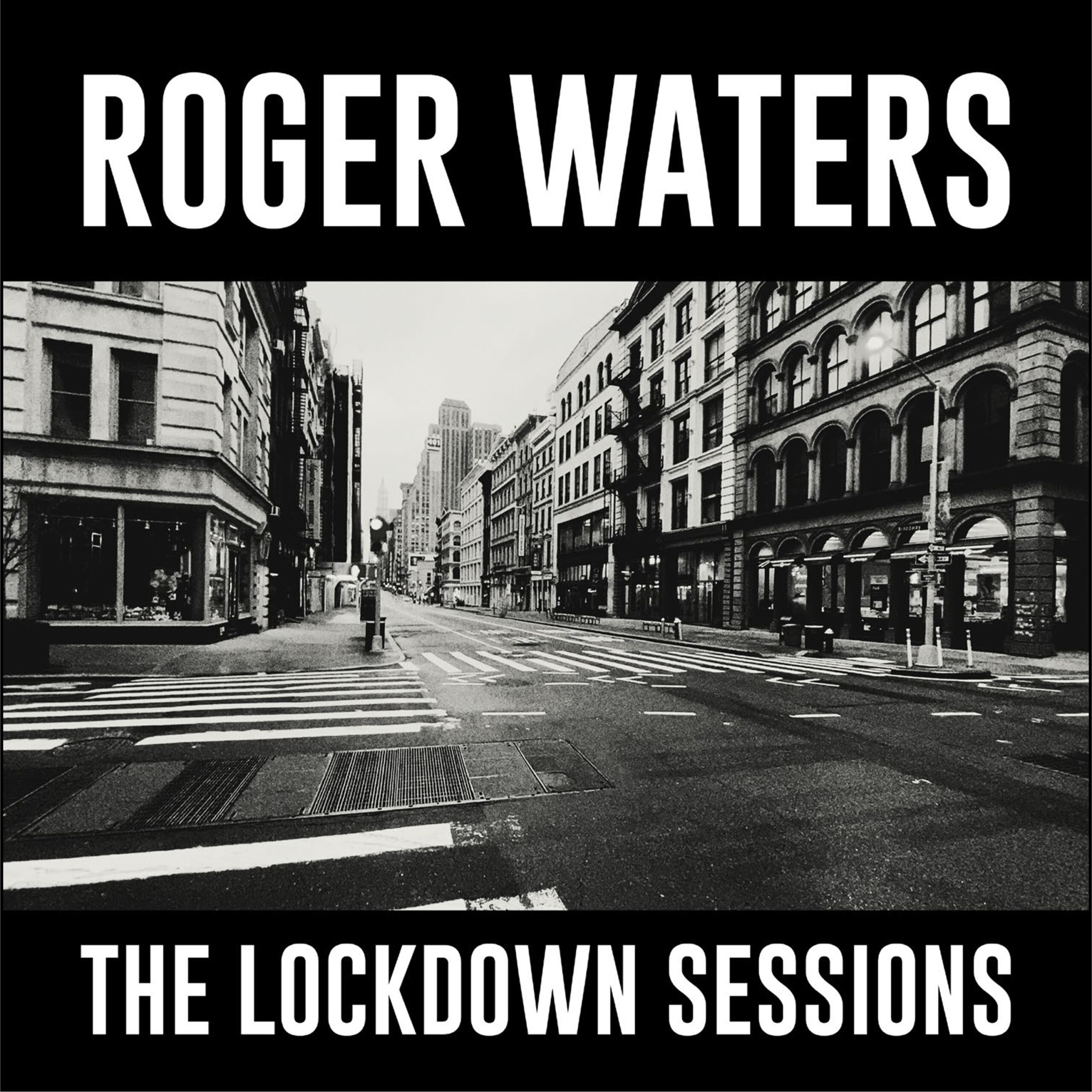Roger Waters Reinvents His Work with "The Lockdown Sessions"
Pink Floyd’s mastermind revisits his past amidst the Covid lockdown

Despite the accusations of antisemitism for his support of Palestine and his stance on Russia’s invasion of Ukraine being “not unprovoked,” there is still no denying Roger Waters’ timeless influence in all avenues of the performing arts. Best known for being a founding member of progressive rock giants Pink Floyd and a profitable touring artist, Waters has always struck a certain chord with his thematic lyrics pertaining to adult life, society and isolation. Those words still have every bit of relevancy within the 21st century and their universal meaning enables Roger to interpret the material in a new light in his politically charged live performances.
The concept of The Lockdown Sessions germinated from the idea of creating an album consisting of the encores performed during Roger’s Us + Them tour. When the idea came to mind, a monkey wrench was thrown with the COVID-19 lockdown in March 2020. Odds were defied when Roger set about recording/filming a backing track of his own and having it sent around to the respective members of his band to apply their overdubs. For what was a rather unorthodox method of assembling an album from musicians located at different parts of the globe between May 2020 to April 2021, this became the temporary “new norm.”
The track sequence of The Lockdown Sessions follows in the order these virtual collaborations were initially uploaded to YouTube, the first being “Mother” on May 17th. This arrangement is faithful to the original version on The Wall, including the note-for-note guitar solo by Jonathan Wilson. As he did upon the song’s initial release in 1979, Roger assumes the role of Pink, pondering on questions such as “Mother, do you think they’ll drop the bomb?” and “Mother, should I trust the government?” This rendition is propelled to a stratospheric level with beautiful vocals from Jess Wolfe and Holly Laessig of the indie pop group Lucius, assuming the role of “the mother” in the choruses. The way their vocals are panned between both speakers is a very tasteful touch.
The next collaboration came on June 20th with “Two Suns in the Sunset.” The instrumental nature of the song implies a sense of hope, yet the lyrics speak of the fear that nuclear war will wipe away the human race. The original version, released on Waters’ last Pink Floyd album The Final Cut from 1983, comes across with greater drive and added steadiness. New blood is infused within this slower transposed arrangement with soulful vocals from Lucius, which are reminiscent of the backing vocals on The Dark Side of the Moon. The song ends just as the original did, with a saxophone solo by Ian Ritchie.
Waters took a trip back to familiar territory from The Wall on August 20th with “Vera.” Similar to how he approached “Mother,” Roger makes excellent use of his lower vocal register. Instead of exercising the frayed remains of his higher register, he offers a vocal performance that’s reminiscent of Leonard Cohen. “Vera” transitions into “Bring The Boys Back Home.” The philharmonic bombast of the original is traded for the more minimalist instrumental arrangement heard on “Vera,” sounding like one continuous piece. Roger has a stab at singing the song’s four main stanzas before handing the microphone off to Lucius, who provide beautiful angelic harmonies. Percussionist Joey Waronker provides the percussive march as the whole band joins and the arrangement intensifies to the song’s anthemic finale. Guitarist Dave Kilminster lays down some rapid fast lead guitar flourishes with a distinguishable guitar tone that almost sounds like Brian May shredding!
A new year was rung and the next installment came on January 18th with “The Gunner’s Dream.” Another offering from The Final Cut, hearing the song transposed to the key of D major allows the chord sequence in the verses to show some parallels with “Us and Them” from The Dark Side of the Moon. The brief saxophone solo from the original version is substituted with the song’s main vocal melody and harmonies sung by Lucius. Outside of the moments where the full band kicks, Roger delivers a very subtle vocal and tickles away the ivories.
So far, it made sense for Roger to dip into his Floydian past with the song selection for this album. On April 17th, he revisited a cut from his 1992 solo album, Amused to Death, entitled “The Bravery of Being Out of Range.” The driving stadium rock sound of the original is traded for a slower, more subdued arrangement. Both guitarists Dave Kilminster and Jonathan Wilson provide a textural guitar solo performed in unison. The song was originally written as a criticism of neoliberal policies instituted by Margaret Thatcher and Ronald Reagan. In an attempt to utilize the realm of music to exercise his controversial political views, Roger offers some modern context posing the question whether US president Joe Biden should speak to Russian president Vladimir Putin to negotiate peace with Ukraine during the break before the final verse.
Clashes of thunder signal the album’s finale, “Comfortably Numb 2022.” This fresh arrangement of what many would consider to be the highlight from The Wall is one that currently serves as the opening number of Roger’s current This is Not a Drill tour. In comparison to the original, it is pitched lower in order to give a more darker, ominous mood. The ears of Pink Floyd diehards will perk when they hear Jonathan Wilson emulate the same back-to-front wah pedal sound heard on Pink Floyd’s earlier epic “Echoes.” Even though the signature David Gilmour guitar solo is missing, a breathtaking vocal solo from Shanay Johnson substitutes it nicely. While this track wasn’t recorded during lockdown, it was performed as the final song of every show from the Us + Them tour and it serves as a fitting way to round off the album.
Kate Izor’s black and white cover photo of a barren Broadway in New York City serves as a time capsule of what human life was like in early 2020. This sentiment is also reflected with each of the band member “selfies” that don the gatefold jacket. The record comes housed in a printed inner sleeve, which includes all the lyrics, credits and a brief write-up from Roger explaining the backstory behind the project. Despite the record having some minor scuffs from the inner sleeve, Memphis Record Pressing did a solid job pressing this as flat as possible without any surface noise. During his time in and out of Pink Floyd, Roger has maintained a consistent line of quality with his work in regards to the production. This album was crafted amidst the most unforeseen social-distanced circumstances and it still provides the impact of a band performing together in a room. The moments where Roger is singing lead accompanied by either piano or acoustic guitar are so intimate sounding, almost giving the impression that he is right in front of you in the room. The soundstage is tight and compact as each mix component is tastefully spread across the stereo spectrum.
The Lockdown Sessions is the reflection of both a tumultuous period us humans had to face and an artist taking stock of his own legacy with an up to date twist.












































.png)








